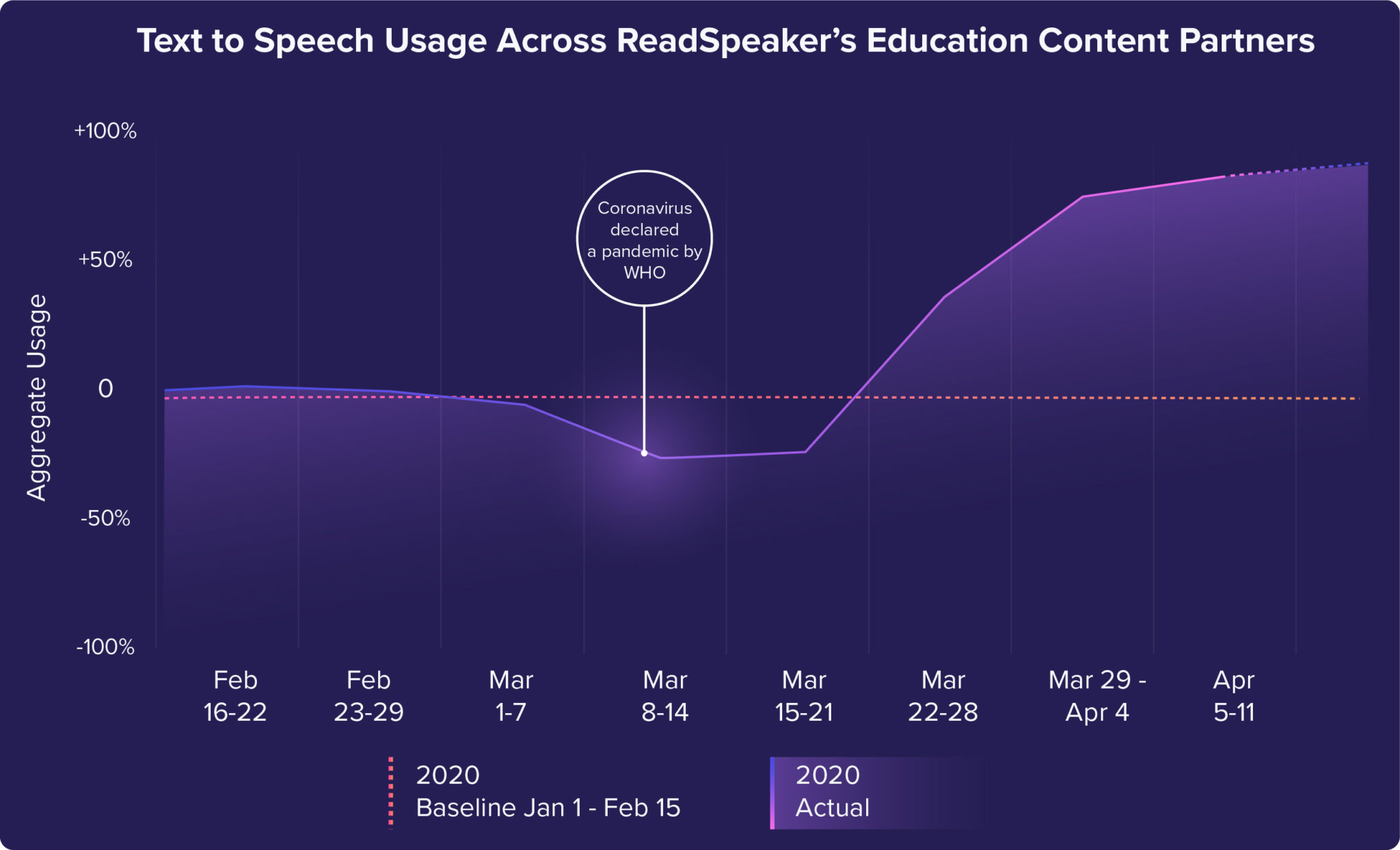In these months of upheaval, one wonders if life will be the same after the dust settles. While only the future will show us what is in store, education and, in particular, distance learning will certainly never be the same.

Traditional learning becomes distance learning
Due to the pivot from in-person learning to curriculum that is administered digitally, the education environment is being turned on its head. As a company that specializes in the voice-enablement of digital education content (including scholarly publications), ReadSpeaker has real-time insight into the shift from traditional to digital. Utilization metrics of our text-to-speech tools show an unprecedented increase in usage, which directly correlates to the increased use of online content and the move to distance learning.In all areas across education, media, and publishing platforms, ReadSpeaker has observed an increase in text-to-speech usage in 2020 compared to 2019. In the academic publisher segment alone, there has been a marked 32% increase compared to the same time period in 2018, illustrating that it is not only curriculum that must be online. Supporting content including assessments, publications, and articles must also be optimized to accommodate online learners.
The Coronavirus has caused a sea change in learning and teaching
Students and instructors alike are being forced to go online and in doing so, they are discovering distance learning technology, unearthing scholarly publications, and engaging text-to-speech tools. Individuals and staff are finding both the structure of online distance learning, along with the accompanying tools that were previously unknown or which appeared too ‘complicated’ to use, are actually hugely beneficial. Post COVID-19, blended learning and online distance learning will become much more common and a strategic point for education institutions and lifelong learning contentWe are witnessing a tipping point in education, where traditional institutions and classroom based educators are learning that distance teaching and mobile learning tools don’t replace them. Instead, the distance learning experience allows students to learn in a different way and requires them to discover content using new tools. Educators too are finding themselves required to use these tools moving forward, as institutions discover online learning and online content has now become a required piece of the puzzle.
The education audience will change
With unemployment creating a new population of diverse learners, individuals will need to reinvent themselves and will have the availability for higher learning. MOOCs are already growing in popularity with web searches drastically increasing since the start of the pandemic. More and more people will be embracing distance learning, either by enrolling in distance learning courses, or by simply consuming content online that they otherwise would have missed.Accessibility and equal access are key issues
With this changing environment and population, accessibility and equal access has already become a front line question, and will only become more important as time goes on, becoming a mainstream issue, no longer the domain of just the disabilities department.What does all of this imply for the future of distance learning and teaching, and what conclusions can be drawn from it?
Just as Zoom has become ubiquitous as a communication tool within the distance learning landscape thanks to the COVID-19 crisis, distance learning structures and tools will now become ubiquitous with education. Learners will expect that the online learning tools that they have been exposed to throughout this crisis will be incorporated into education courses moving forward. Administrators and institutions will need to ensure they are meeting the changing expectations of a new post Coronavirus world, and the tech-savvy learner.Try out the live integration with ReadSpeaker's text-to-speech offering on this blog via the button above the title, then reach out to them to learn more.